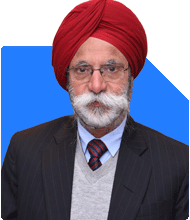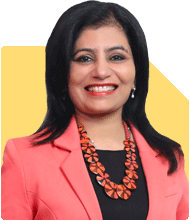Ramalingam Kalirajan |9758 Answers |Ask -Follow
Mutual Funds, Financial Planning Expert - Answered on Apr 13, 2024
He has an MBA in finance from the University of Madras and is a certified financial planner.
He is the director and chief financial planner at Holistic Investment, a Chennai-based firm that offers financial planning and wealth management advice.... more

I lost my job and i am getting my 18 months salary.i have personal loan ODI limit loan Car loan HOME LOAN UNDER my name the amount is approx 24lakhs Personal laon i need to pay off 11lakh Od Limit loan approx 13 lakh Do u think there js anyway to pay off the total debt leavung car loan and car loan and i can save and invest in SIP
1. Assess Your Finances:
Income: Calculate your 18-month salary and any other potential income sources.
Expenses: List down your monthly expenses to understand your cash flow.
Debts: Identify the interest rates, monthly payments, and outstanding amounts for each loan.
2. Prioritize Debts:
High-Interest Debts: Focus on paying off high-interest debts first, such as personal loans and OD limit loans.
Home Loan: Home loans generally have lower interest rates and longer tenures. You might consider continuing with your EMIs if the interest rate is manageable.
Car Loan: Since a car loan is a secured loan, the interest rate is usually lower. If you can manage the EMIs, you might continue with it.
3. Negotiate with Lenders:
Personal Loan & OD Limit Loan: Try negotiating with your lenders for a lower interest rate or restructuring the loan to reduce the monthly EMI burden.
Home Loan: Some banks offer loan restructuring or EMI moratorium options during financial hardships. Check with your lender for any available options.
4. Create a Repayment Plan:
Debt Snowball or Avalanche Method: Choose a debt repayment strategy that works for you. The snowball method focuses on paying off the smallest debts first, while the avalanche method targets the highest interest debts first.
EMI Payments: Allocate a portion of your 18-month salary towards settling the high-priority debts.
5. Emergency Fund:
Savings: Set aside a portion of your 18-month salary as an emergency fund to cover at least 6-12 months of living expenses.
Investments: Once the high-interest debts are paid off and emergency fund is set, resume your SIPs to build wealth for the future.
6. Review and Adjust:
Budgeting: Create a monthly budget to track your income, expenses, and savings.
Financial Advisor: Consult a financial advisor to review your financial situation, debt repayment plan, and investment strategy.
Conclusion:
While it might be challenging to pay off all the debts with your 18-month salary, focusing on high-interest debts and negotiating with lenders can help reduce your financial burden. Consider continuing with your home loan and car loan if the interest rates are manageable. Once you've addressed the debts and set aside an emergency fund, you can resume your savings and investments through SIPs for long-term wealth creation.
You may like to see similar questions and answers below
Ramalingam Kalirajan |9758 Answers |Ask -Follow
Mutual Funds, Financial Planning Expert - Answered on Aug 22, 2024
Ramalingam Kalirajan |9758 Answers |Ask -Follow
Mutual Funds, Financial Planning Expert - Answered on Jul 06, 2024
Ramalingam Kalirajan |9758 Answers |Ask -Follow
Mutual Funds, Financial Planning Expert - Answered on Jul 02, 2024
T S Khurana |492 Answers |Ask -Follow
Tax Expert - Answered on Oct 05, 2024
Ramalingam Kalirajan |9758 Answers |Ask -Follow
Mutual Funds, Financial Planning Expert - Answered on Feb 17, 2025
Sunil Lala |214 Answers |Ask -Follow
Financial Planner - Answered on Jul 17, 2025
Sunil Lala |214 Answers |Ask -Follow
Financial Planner - Answered on Jul 17, 2025
Archana Deshpande |117 Answers |Ask -Follow
Image Coach, Soft Skills Trainer - Answered on Jul 17, 2025
Dr Nagarajan J S K |1829 Answers |Ask -Follow
NEET, Medical, Pharmacy Careers - Answered on Jul 17, 2025
Dr Nagarajan J S K |1829 Answers |Ask -Follow
NEET, Medical, Pharmacy Careers - Answered on Jul 17, 2025
Dr Nagarajan J S K |1829 Answers |Ask -Follow
NEET, Medical, Pharmacy Careers - Answered on Jul 17, 2025
Dr Nagarajan J S K |1829 Answers |Ask -Follow
NEET, Medical, Pharmacy Careers - Answered on Jul 17, 2025
Dr Nagarajan J S K |1829 Answers |Ask -Follow
NEET, Medical, Pharmacy Careers - Answered on Jul 16, 2025
Dr Dipankar Dutta |1755 Answers |Ask -Follow
Tech Careers and Skill Development Expert - Answered on Jul 16, 2025
Nayagam P P |8925 Answers |Ask -Follow
Career Counsellor - Answered on Jul 16, 2025






















